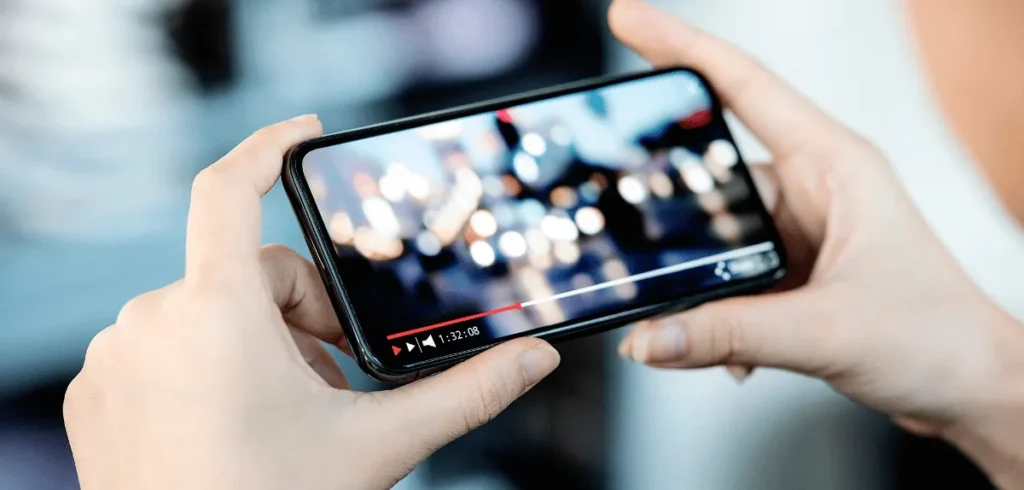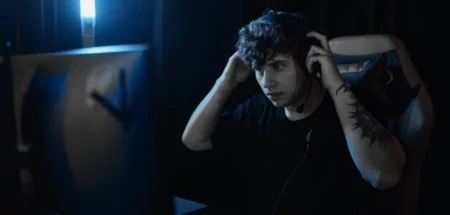You can’t make everyone your target audience. Trying to do so often lead to burnout and so-so content. Instead, focus on your real audience. But, how to find your target audience?
You need to understand what your content is about, who it’s for, and what the competition looks like. And this isn’t a “nice-to-do” step. It’s a must if you want your content to make a difference.
In this article, we’ll guide you through the process, from explaining why it is important, sharing some tips to find your target audience and more. Are you ready? Let’s get started.
What Is a Target Audience?
A target audience is a group of people most likely to enjoy your content. They share common characteristics, interests, demographics, or behaviors. So, they’re not just random viewers.
Your target audience can be based on certain age, gender, location, hobbies, language, or even a community, like gamers. It’s the people your content is meant to reach and influence.
Technically, as a content creator, you can define your target audience through demographic, behavioral, contextual, or psychographic targeting. It all comes down to your content strategy.
And if you look around, you’ll see that most successful creators tend to focus on people with similar interests or needs.
Khaby Lake chose to post short videos on TikTok. And his reaction clips click with people who want easy, relatable content. That’s how he ended up being one of the biggest TikTok stars.

So, finding the right target audience is worth it. It helps you create awesome content, choose the right platforms, and build your personal brand in a way that really connects with them.
That’s why we mentioned that identifying your target audience is an important step in becoming a content creator.
Why Target Audience Matters?
You know what a target audience is. But do you know why it matters to find the right one?
1. You Can Make Content People Want
Mr. Beast didn’t become famous just by counting numbers. Most of his popularity comes from his challenge videos, like “Would You Risk Drowning for $500,000?”
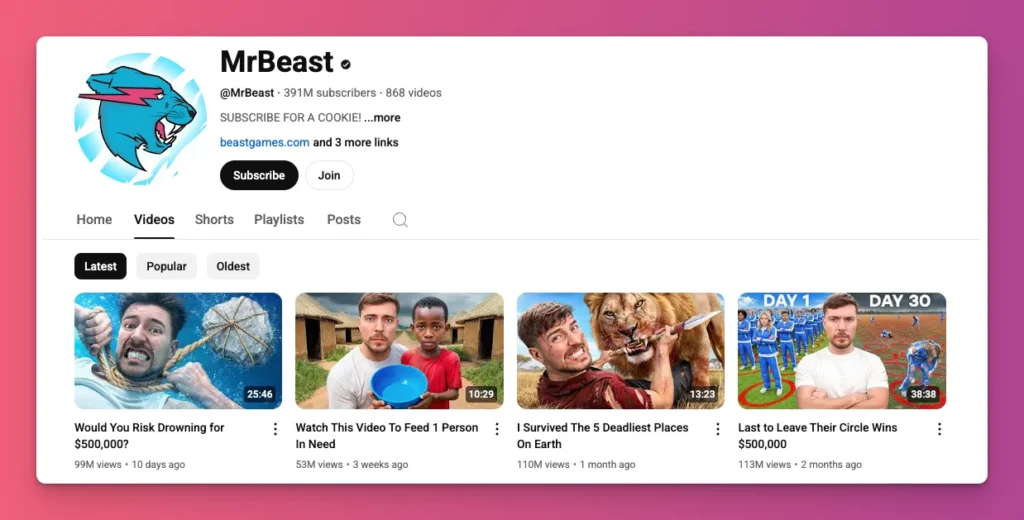
But did his success happen by chance, or did he research his target audience? Surely, the latter.
The truth is, 54% of YouTube users are men, mostly between the ages of 18 and 44. So, creating videos about challenges, experiments, or gaming is a good idea to attract more viewers.
2. Your Content Will Get More Engagement
Platforms like YouTube and TikTok use algorithms to suggest videos based on what users like.
And when your content feels relevant, viewers are more likely to comment, like, and share. The algorithm notices this and will help promote your videos to a wider audience.
About 62% of content creators say that knowing their target audience helps them get more engagement. If you want better results, you should do the same.
3. You Can Make a Better Content Plan
If you stream for viewers worldwide, it can be tough to choose the best time to go live without knowing your target audience. You could end up streaming when your biggest fans are sleeping
The same goes for YouTube. If your niche is cosplay, your fans are mostly in the US and Japan. So, posting cosplay tutorial videos at 3 AM US time isn’t going to work.
Knowing where your audience is helps you pick the right time to post. And when you do, more people will see your content and engage with it.
4. You Can Stand Out From the Crowd
If you know your target audience, it’s easier to come up with something unique when the competition is fierce. It helps you become the creator they turn to.
For example, most travel vlogs focus on the creator themselves, but not everyone enjoys that style. So, you might try making a faceless travel vlog, like Solo Solo Travel.
That way, viewers can enjoy the scenery without seeing who’s behind the camera. This makes the experience feel more immersive and less personal.
5. You Can Avoid Wasting Time
Not knowing your audience is like throwing darts in the dark. You might hit the target, but most of the time, you won’t.
For example, let’s say you want to become a pro gaming streamer and build your channel. You decide to stream Clash of Clans on Twitch because you’re really good at it.
Wait, did you know that most viewers on Twitch tend to watch games like League of Legends or Counter-Strike 2?
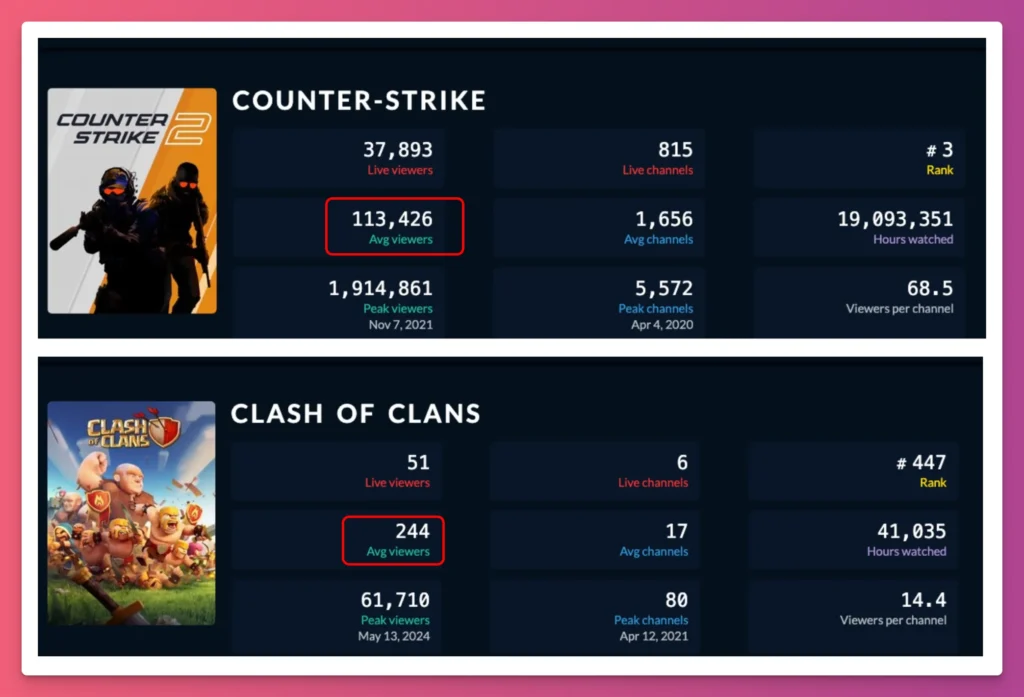
If your content doesn’t match what your audience wants, you’ll waste time sharing content that no longer interest them.
6. You Can Earn More as a Pro Content Creator
If you’re a fashion influencer looking to make money from brand partnership, should you focus on X users or Instagram users?
On Instagram, 49.4% of the users are women and about 28% are between 18 and 24 years old. These numbers match the audience that beauty, fashion, and lifestyle brands want to reach.
On X, only about 40% of users are women. It’s still up for debate, but Instagram probably offers more chances for fashion influencers to get brand deals.
Read Also: How to Make Money as a Content Creator
How to Find Your Target Audience
So, what are the steps to find your target audience?
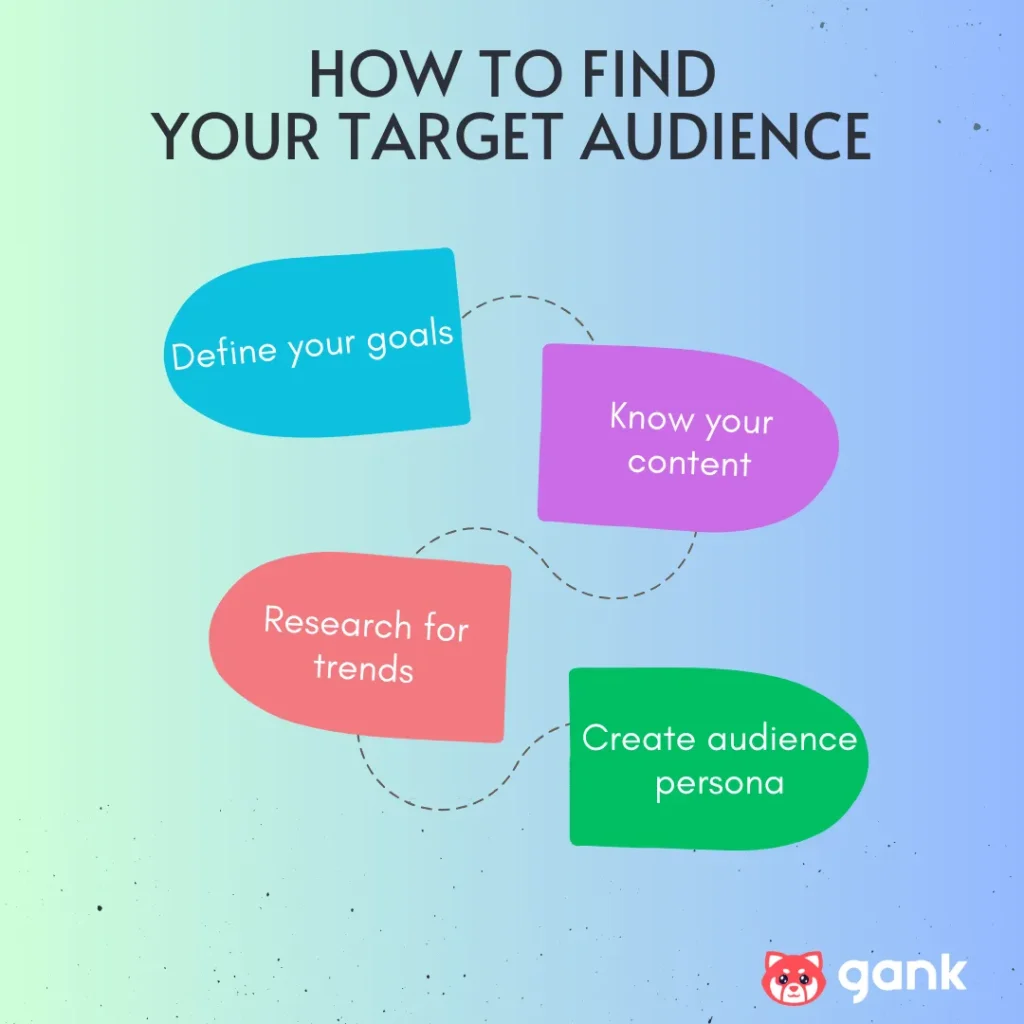
1. Define Your Goals
The first step in finding your audience is to know what you want your content to do. Without a clear goal, it’s easy to get lost.
Think about what you want from your channel. Do you want to teach, entertain, inspire, or a combination? For example, if you want to help beginners learn about closet cosplay, make simple tutorial videos on YouTube.
2. Understand Your Content
To find your target audience, you need to understand your content. The topics you pick and the format you prefer will influence who watches your content.
If you’re into gaming, are you more likely to stream live on Twitch or post videos on YouTube? That choice can change who your viewers are.
Also, think about the length of your videos. Do you want to make longer ones, or do you prefer short vertical videos?
3. Define Your Targeting Approach
Before you start with technical steps, decide your targeting approach. There are at least four approch to find your target audience.
The most common method is demographic targeting, which looks at age and gender. Another one is behavioral targeting which focuses on the platforms people use and content they like.
You can also use psychographic targeting that is about people’s values and personality. And, there is contextual targeting, which is based on what users are currently searching for.
Picking the right method helps you reach the right target audience.
4. Assume Your Target Audience
When you’re trying to find your target audience, it’s fine to start with a guess. But don’t stop there.
Start by looking at demographics or audience interests to get a clear idea of who your target audience is.
For example, if you make gaming videos, your viewers are likely gamers between 18 and 34 years old on YouTube or Twitch. And if you create beauty content, your audience might be women aged 20 to 40 who are into makeup or skincare on Instagram.
5. Research for Trends
It’s a good time to see if your idea holds up. Checking trends can help you verify your assumptions. If you’re new, tools like Google Trends can provide some useful early insights.
For those with existing content, options like Google Analytics or Meta Business Suite can be helpful. These tools can give you data on demographics, engagement, and content performance. You can see if you’re connecting with the right target audience.
You might also try audience research tools like Audiense or BuzzSumo.
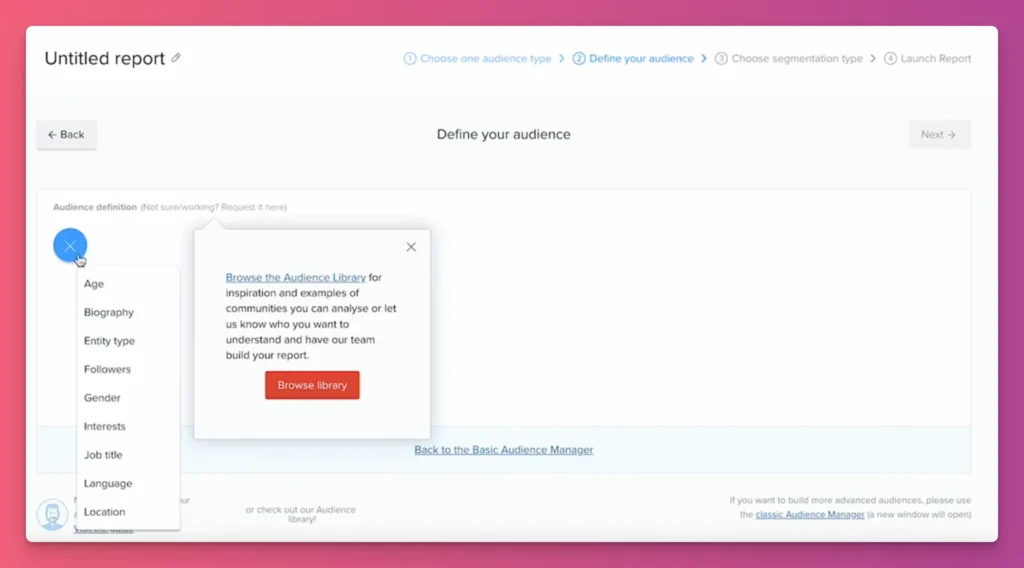
Read Also: Digital Marketing Tools to Grow Audience
6. Check Your Competitors
Think of this as your cheat sheet to pinpoint your perfect audience. Your competitors already have the crowd you’re after. So spying on them can show who your future viewers could be.
You can start with the big picture of your competition, or you can also focus on specific channels that seem to be your competitors. Visit their channels to see who their audiences are.
Pay attention to the problems they mention that aren’t fully answered. That’s your chance to spot what’s missing. Maybe they make good tutorials but forget to add fun or interesting parts. Or they post often but ignore their viewers.
7. Create Audience Persona
Based on your initial research, you need to create a persona to find your target audience. An audience persona is a fictional character that represents your ideal viewer. They turn numbers and facts into individuals with their own preferences and behavior.
For example, your target audience persona might be: John Green, a 25-year-old professional who loves game reviews, values authenticity, and spends about 3 to 5 hours each day on YouTube and Facebook Live.
With these details, it’ll be easier for you to create content that connects with your viewers. You can use tools like Make My Persona or Online Persona Creator.
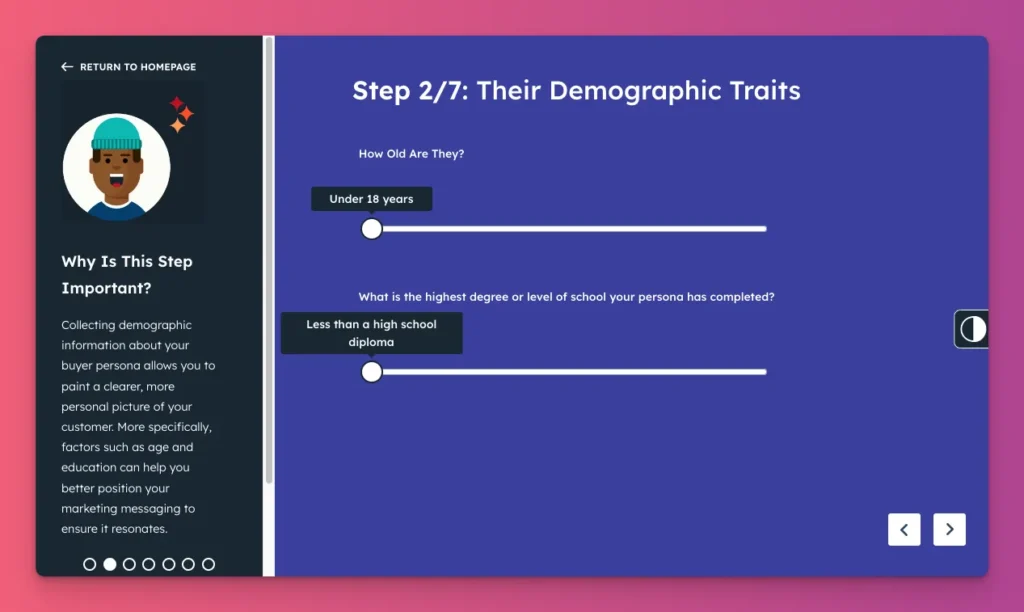
8. Test and Improve
Now that you have a clear idea of your target audience, you can start creating content. But remember, it’s important not to go overboard with content production just yet.
If you’re a YouTuber, use YouTube Analytics to help you. It gives you useful insights about your users, watch time, and engagement metrics.
For example, you might find out that your gaming tutorials are more popular with people in their 30s than with teens. Or that your cosplay videos do better in countries you hadn’t thought of.
Also, think about when to post your content. For many people, Wednesday at 4 PM works well. But, this might not be true for your target audience.
Read also:
9. Track Your Content Performance
Finding your target audience takes ongoing work. And to do this well, keep an eye on how your content is doing. This helps you reach the right target audience and get them interested.
See if anything changes. Are some people not liking your videos as much? Are gaming videos getting fewer views, but reaction videos are popular?
You can learn by watching SSSniperWolf. She used to be known for gaming videos, but now she makes reaction videos on YouTube. These videos are getting her more views, likes, and shares.
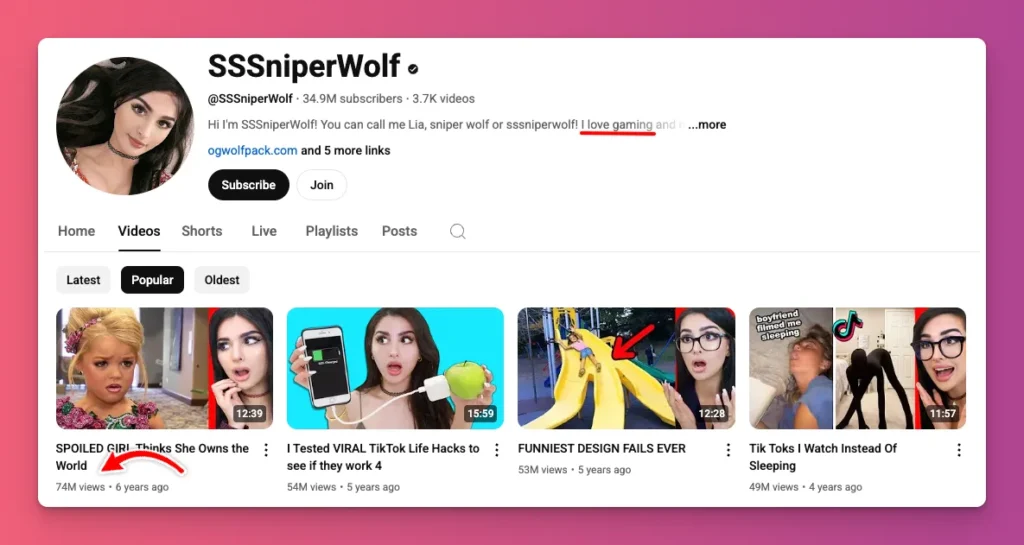
Target Audience Examples
Want a quick peek at what a real audience is? Check out these target audience examples to inspire you:
- Teen gamers — This energetic audience wants viral games, quick gameplay, relatable creators, and interactive streams. They enjoy interactive streams and value authenticity and community.
- Millennials — This audience enjoys nostalgia, humor, and useful information. They want detailed reviews, analysis, or personal stories, and value good production.
- “Just Chatting” audience — This audience likes streams about daily life and personal stories. They want honest, relatable creators and actively ask questions.
- Pop fans — They’re passionate about shows and trends. They enjoy fandoms, discussing theories, and themed events.
- Language-based communities — These audiences prefer content in their native language, value cultural understanding, and appreciate shout-outs and links between global and local trends.
- Educational content fans — They want clear, engaging tips that simplify complex topics. They value accuracy, and support creators via likes and shares.
- Vtubers fans — They love virtual characters, creative stories, and immersive streams. They enjoy interacting, sharing fan art, and supporting creators through SuperChat.
- Niche hobbyists — These audiences value their interests. They prefer creators who share their skills and passion, engage with their community, provide feedback, and accept donations.
Tips on Identifying Your Target Audience
Actually, you’re all set, but here are a few tips to help you better identify your target audience:
- Check Negative Comments — Critics often point out what people want but aren’t getting. If someone asks, “Why don’t you play X game?” it shows a chance to reach new audiences.
- Look at Unusual Engagement Times — Ever seen a comment surge at 3 AM? Looks like your content is a hit with night owls and global fans. There’s an audience waiting in their time zone.
- Follow the “Superfans” — You know that one person who has an opinion on everything? Check out their profile for a fun dive into their follows, and group memberships.
- Check Mentions — Your name may show up unexpectedly, like in a random X thread. Set alerts for your handle. You might discover a crossover audience you didn’t expect.
- Ask Open-Ended Questions — Next time you’re live or posting, ask, “If you could make me play any game, what would it be?” The answers will reveal your community’s hidden interests.
- Collaborate with Micro-Influencers — Partner with smaller creators with loyal followers, even outside your niche. Their fans are more likely to check you out, giving you fresh eyes.
- Watch for Slang — Pay attention to viewers’ slang and emojis. Use their language in titles or streams. It’s like a handshake for your target audience.
Read Also:
Finding Target Audience: A Wrap-Up
Some content creators think their content should reach everyone. But that’s not how it works. To do well, you need to find your target audience and focus on them.
You’ve learned why this matters. When your content connects with the right people, it helps you plan better and earn more as a creator.
You also know how to find your audience. Start with your goal and understand your content. Then, do some research about trends and competitors, and keep improving as you go.
We hope this information helps. And if you like this article and want more tips on creating content and making money from it, visit our blog and subscribe.


